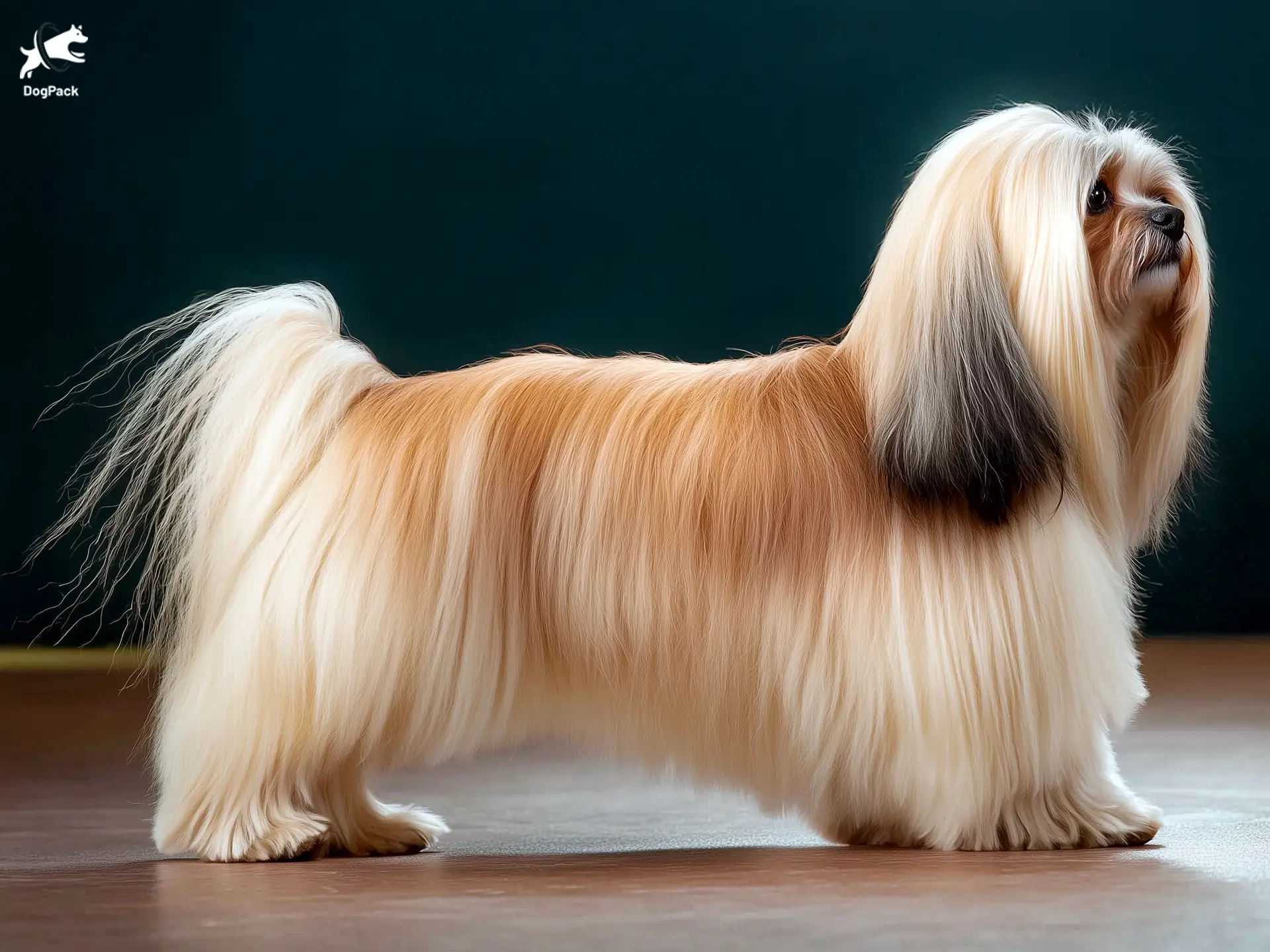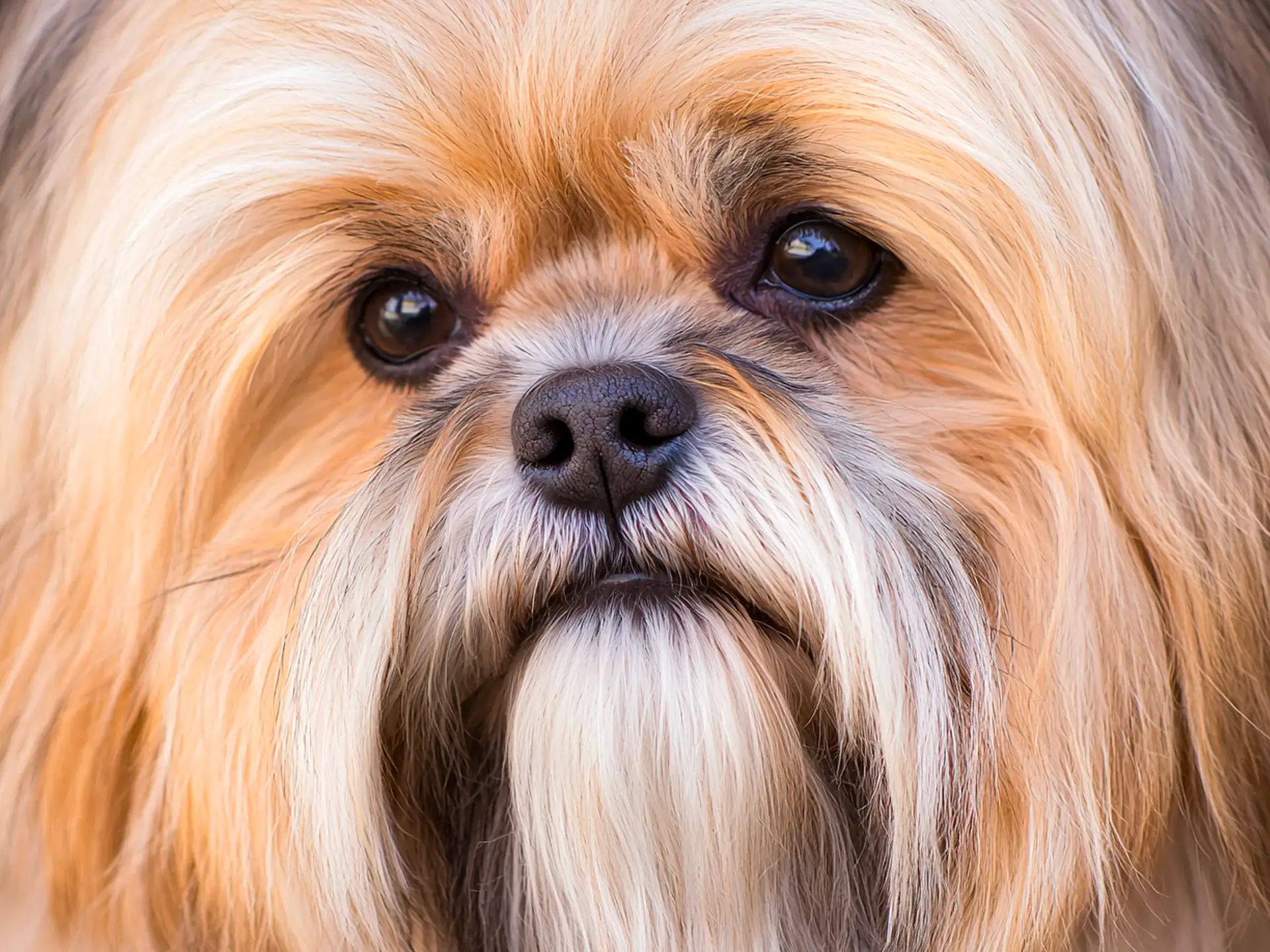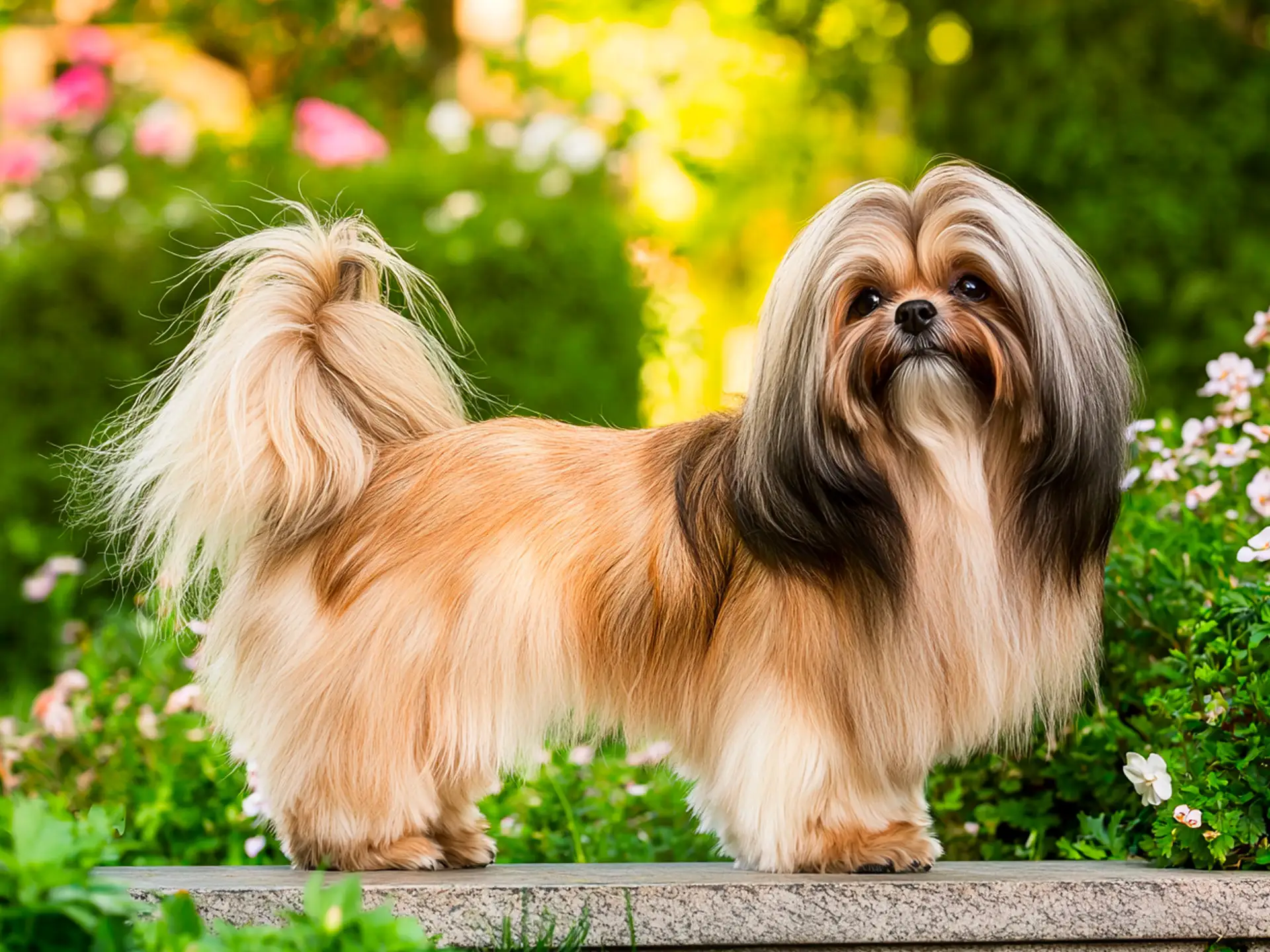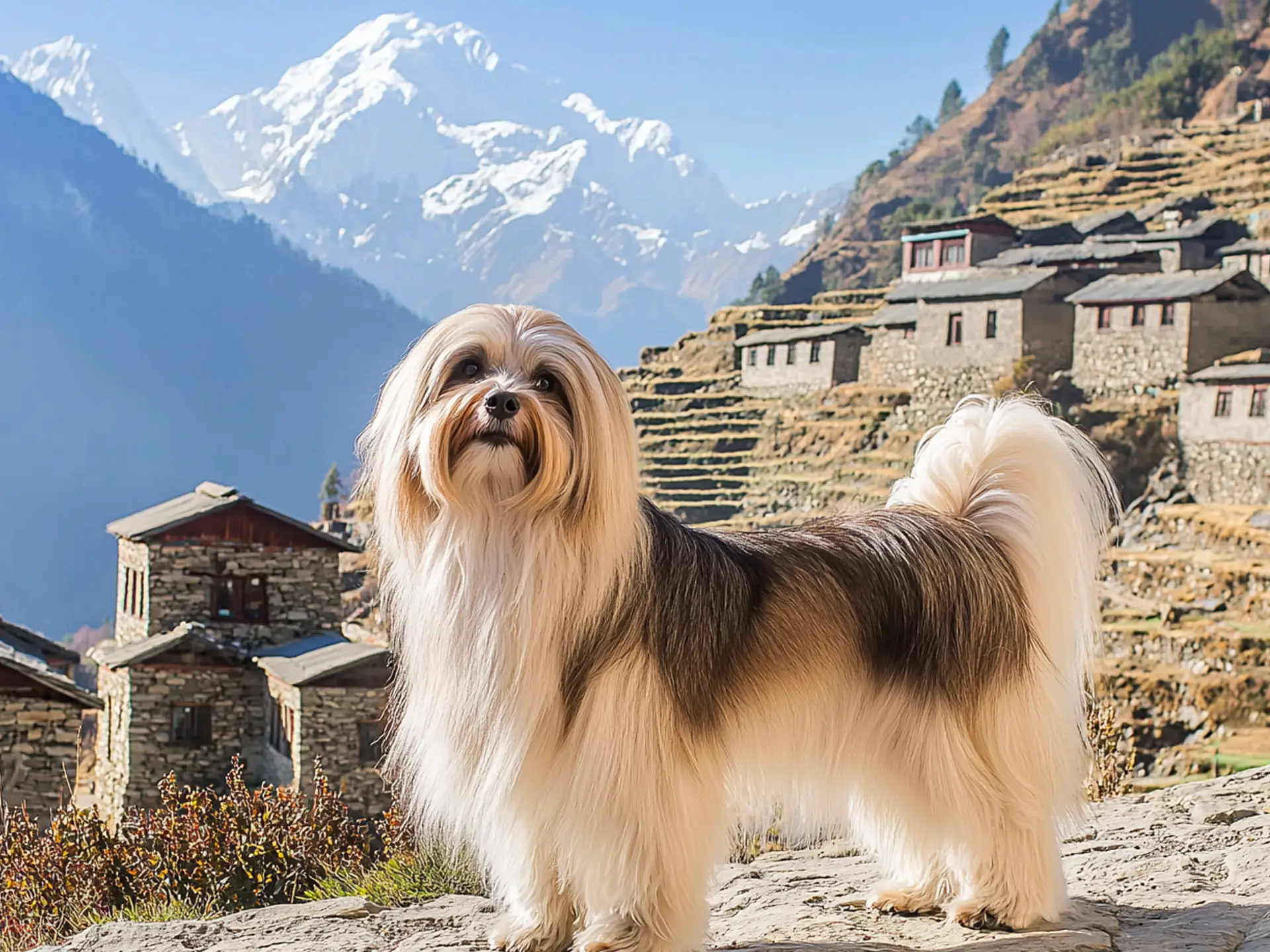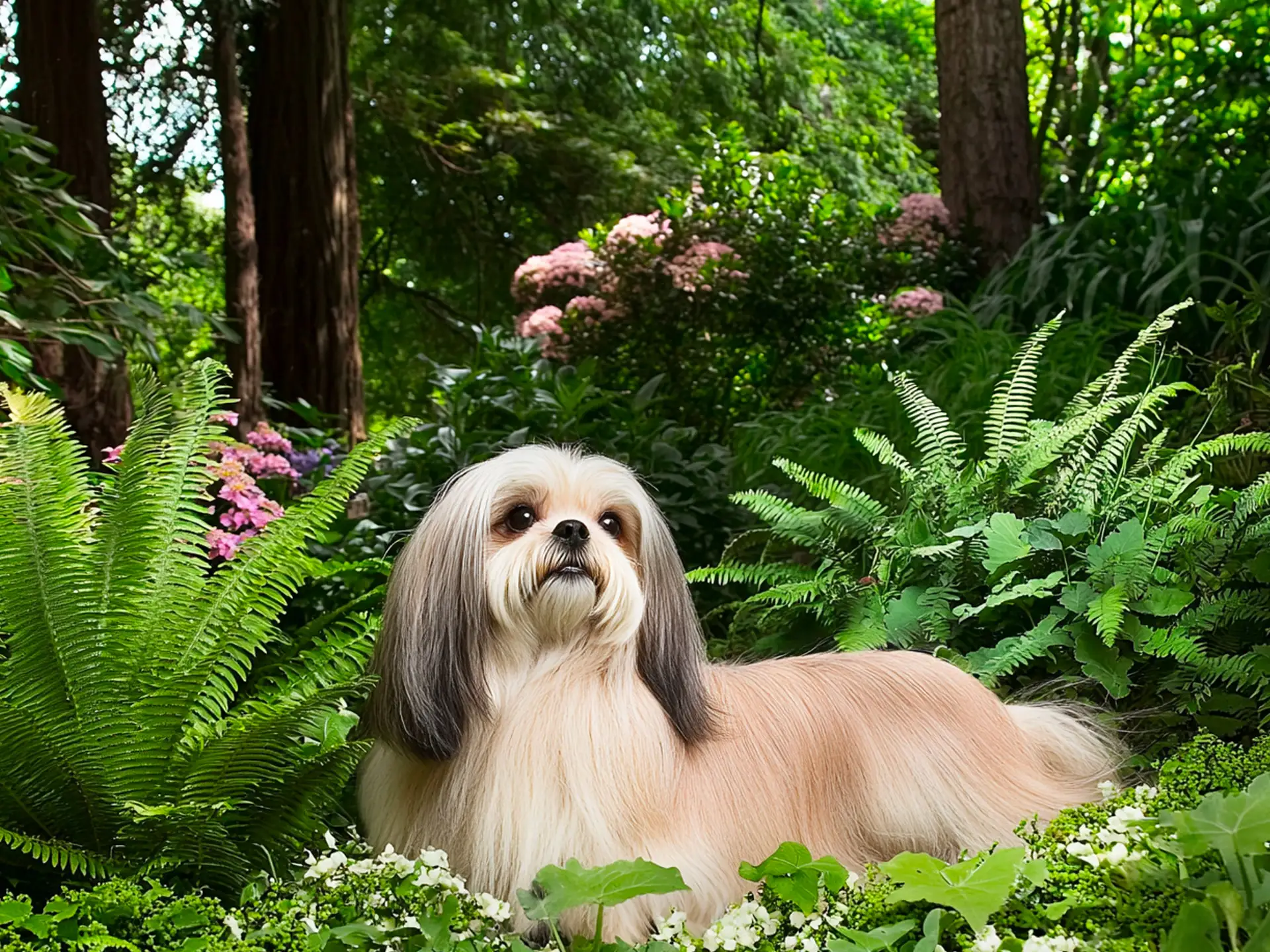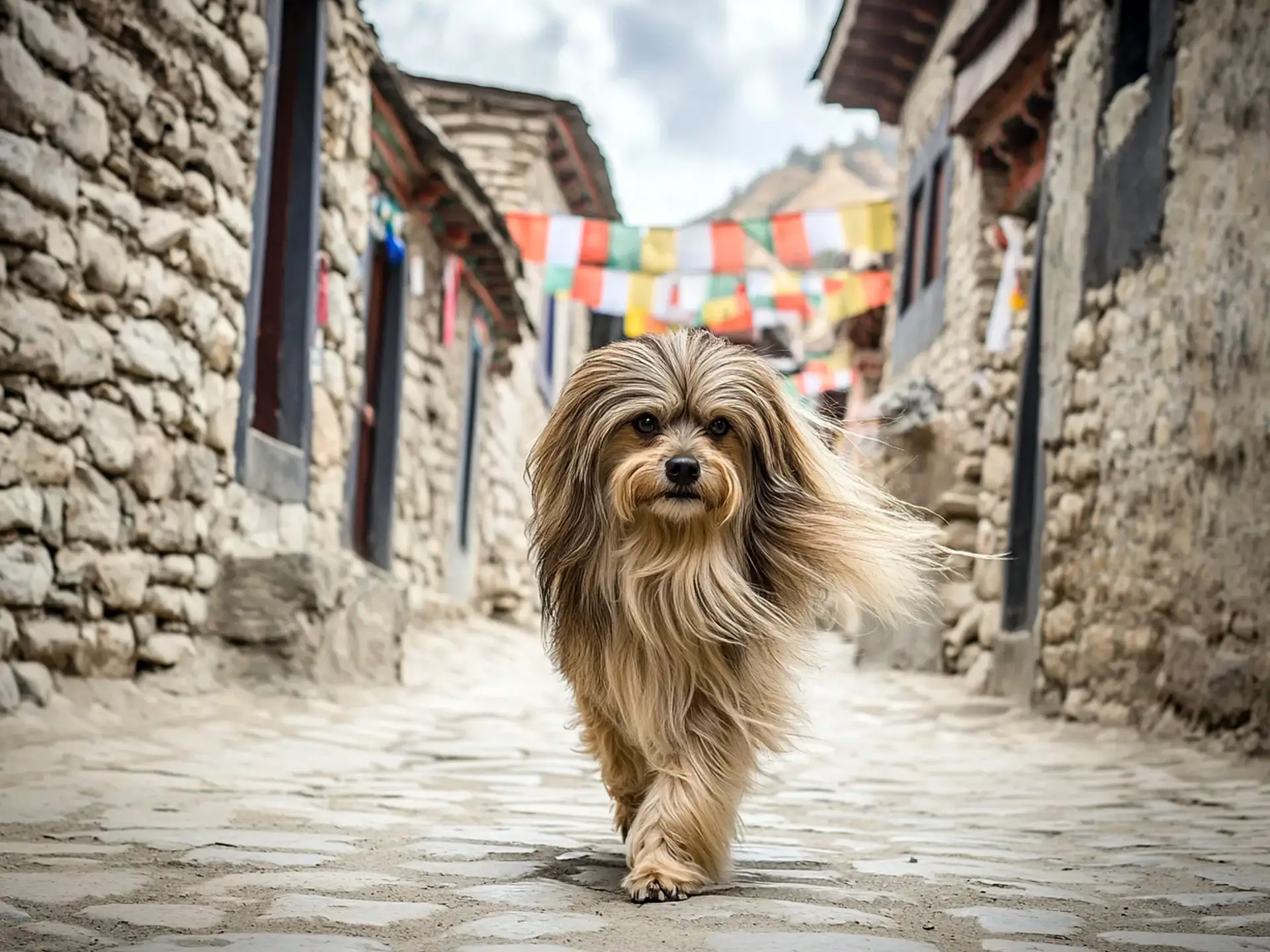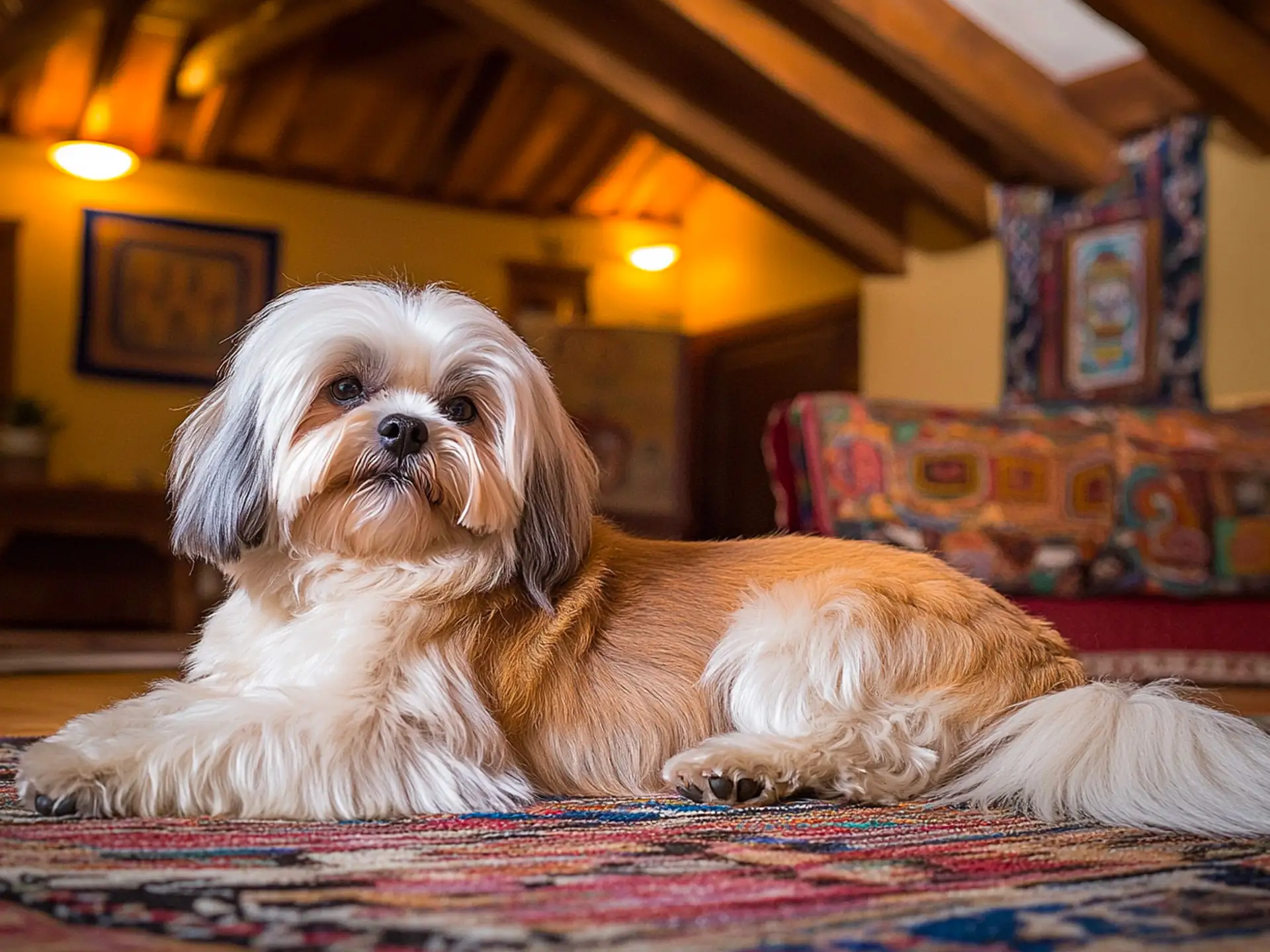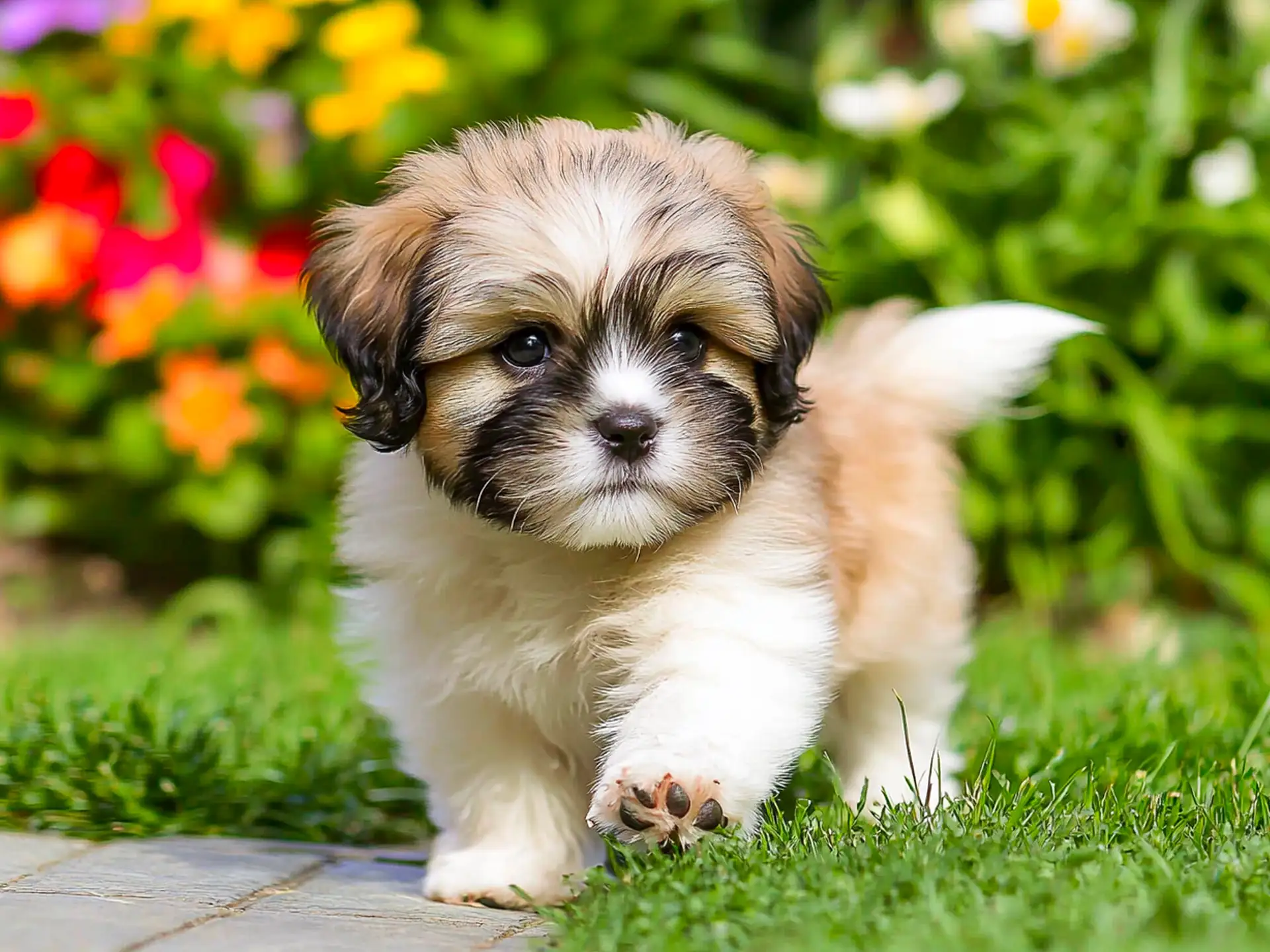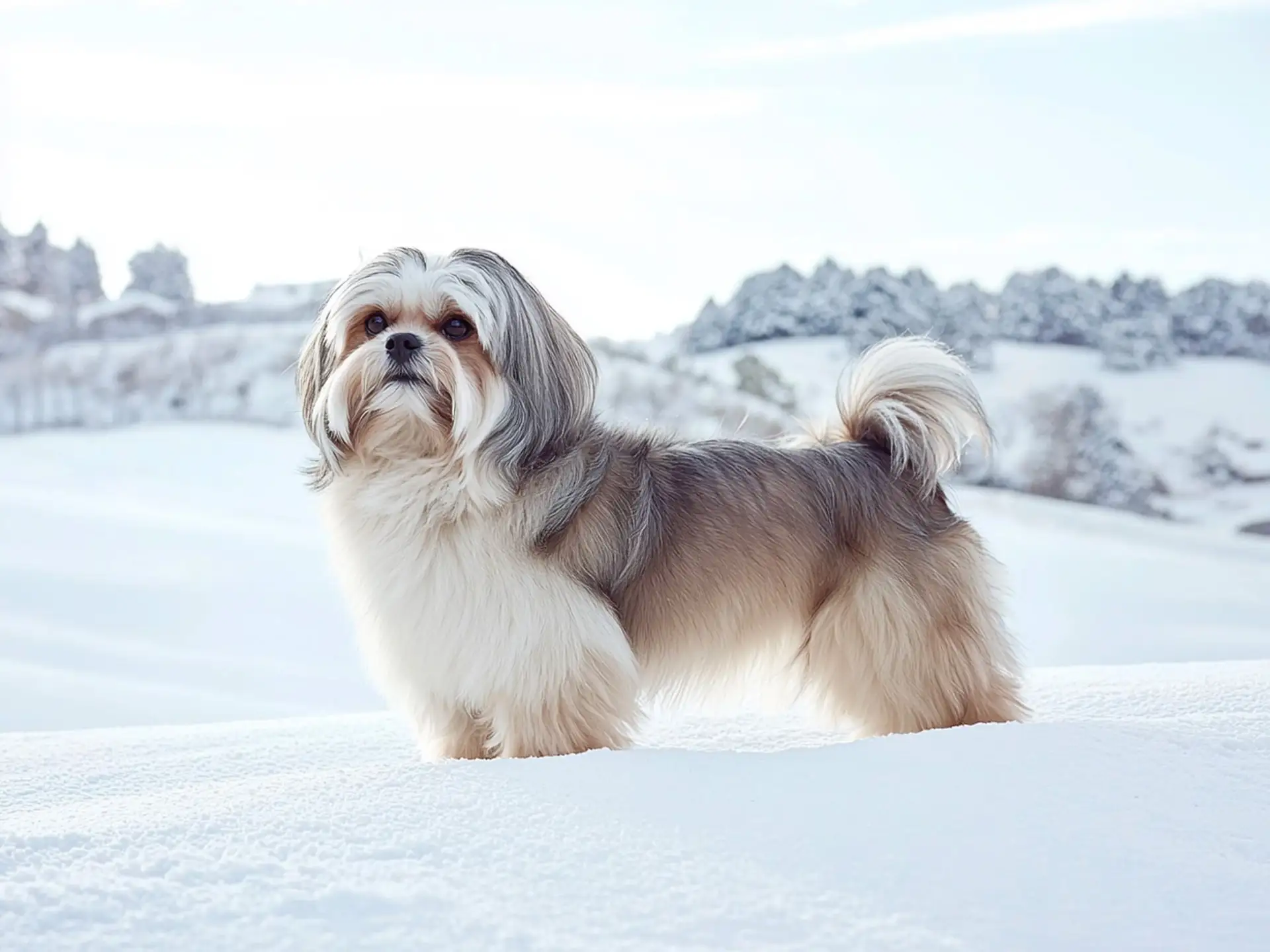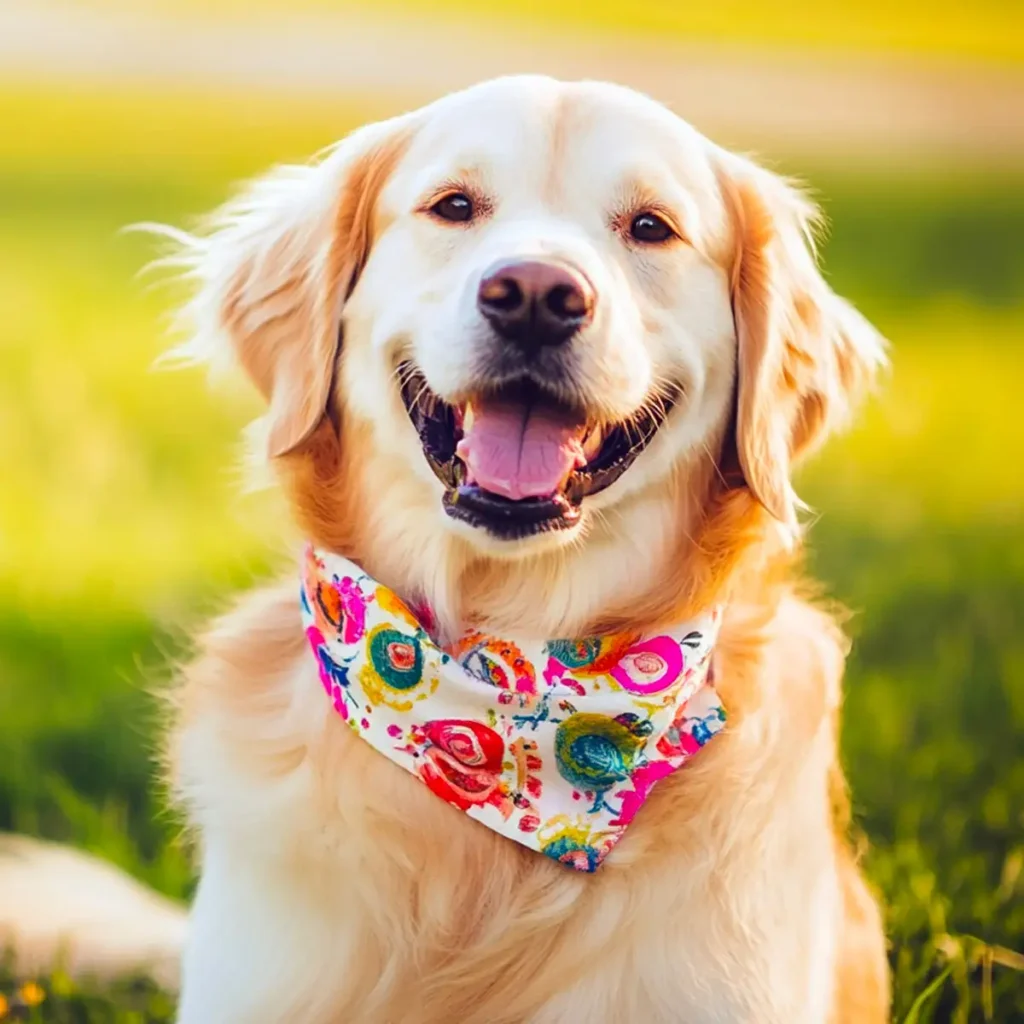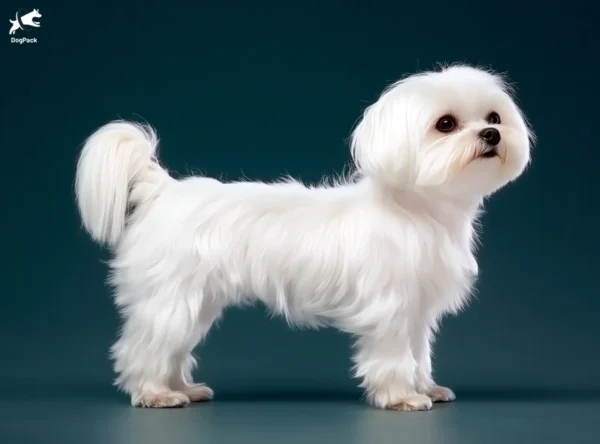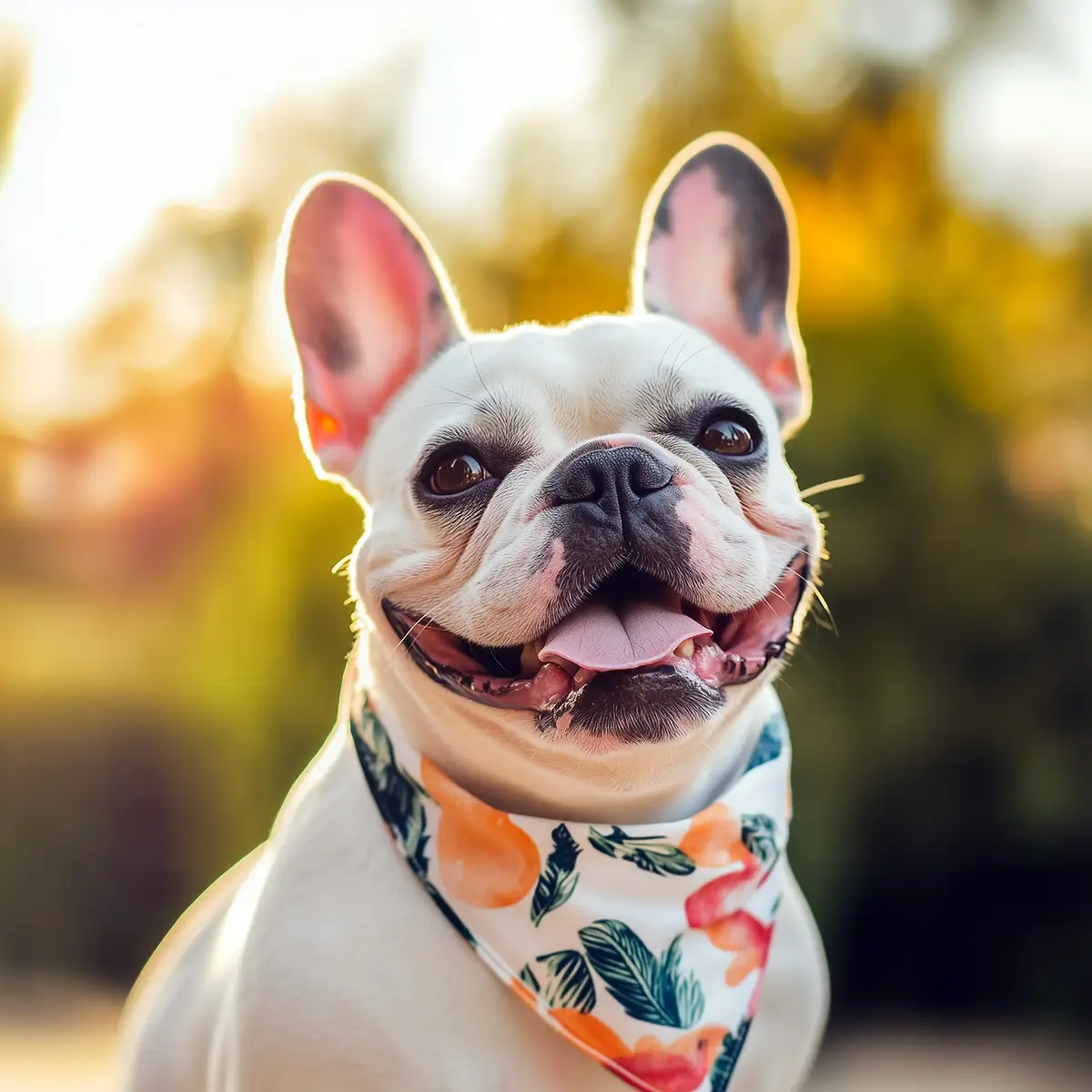Lhasa Apso Dog Breed Info & Overview
Tiny in stature yet fearless at heart, this breed has been winning admirers for centuries. Known for a luxurious, floor-length coat, the Lhasa Apso delivers endless charm and devotion. Whether relaxing on your lap or patrolling the house, these charismatic pups balance cuddly sweetness with confident independence to captivate owners worldwide.
Characteristics
Pictures
Breed History
Legend has it these pint-sized guardians were bred in Tibetan monasteries to stand watch inside sacred walls, where they served as alert companions and protectors. Monks cherished them for their keen senses and perceptive nature. With such a storied role, they often held a place of honor in palace courts as well, believed to bring good fortune and ward off dangers lurking behind high mountain passes.
Over time, travelers and dignitaries introduced them to Western audiences, who were captivated by their regal coats and hardy dispositions. The dogs quickly gained popularity, admired for both their lion-like mane and lion-hearted courage. Although small, they carried themselves with undeniable pride, reflecting centuries of selective breeding in Tibet’s harsh climate and high altitude.
Their name, “Lhasa,” comes from the sacred Tibetan city, while “Apso” possibly translates to “bearded” or is related to the word for “goat-like.” Either interpretation underscores the breed’s distinctive coat. Renowned for steadfast loyalty and a vigilant spirit, they evolved from spiritual sentinels in monasteries to well-loved household companions across the globe, retaining every ounce of their traditional poise.
Temperament, Personality
Sturdy confidence and unwavering loyalty define these dogs. They carry themselves with a proud gait but readily show playful exuberance at home. Quick-witted and slightly stubborn, they can be delightfully mischievous, keeping families on their toes with clever antics. Yet their protective side emerges when strangers knock—ensuring everyone in the household feels watched over by a plucky, pint-sized guardian.
Surprisingly affectionate with loved ones, they relish cuddling on the couch and receiving gentle grooming sessions. At the same time, they prize personal space, enjoying time to lounge independently. Their vigilance makes them especially watchful around new faces, so socializing them early with neighbors and friends helps balance suspicion with sociability.
This breed typically bonds strongly with family members of all ages, though children should learn to respect its boundaries. They can coexist well with other pets if carefully introduced. The breed’s innate self-assuredness can come off as aloof, but beneath that regal exterior lies a heart that truly adores its human companions—once trust is earned.
Physical Characteristics
With a long, flowing coat that sweeps the floor, these dogs dazzle at first sight. Traditionally, their hair covers their eyes, but rest assured: they can see through that curtain of fur. The coat’s texture is dense and straight, forming a protective layer originally meant to shield against Tibetan weather. Their trademark “lion-like” appearance is both striking and iconic.
Beneath all that fur is a compact body that stands around 10 inches tall, giving them a sturdy yet refined silhouette. They have feathered ears that often blend seamlessly into the rest of their coat, creating a continuous, glamorous flow of hair. Dark, oval eyes peek out, reflecting curiosity and intelligence.
Though often associated with a solid gold or sandy coloring, they come in a variety of shades including black, white, or parti-color. A well-groomed Lhasa Apso commands attention with a luxurious mane that rivals any runway model. Tail carried high over the back signals an air of dignity, befitting these regal little companions.
Health Issues
Eye conditions can occasionally affect this breed, including progressive retinal atrophy or dry eye. Regular checkups with a veterinary ophthalmologist help catch issues early. Their lush facial hair may also trap irritants near the eyes, so keeping the face clean reduces the chance of infection. Being watchful for squinting or redness goes a long way in preventing complications.
They can be prone to hip dysplasia and patellar luxation—joint issues that may limit mobility if untreated. Maintaining a healthy weight and providing low-impact exercise supports their joints. Consulting a trusted veterinarian for periodic orthopedic evaluations ensures problems don’t go unnoticed. It’s also wise to keep them from jumping off tall furniture to avoid injury.
Like many small breeds, they may experience dental issues, so professional cleanings and at-home dental care are crucial. Some might develop skin sensitivities due to their thick coats, so monitor for dryness or itching. With routine wellness checks, balanced nutrition, and mindful grooming, many live long, comfortable lives into their teens, staying alert and spirited well beyond puppy years.
Grooming Needs
For many, the hallmark of owning one is the daily brushing routine. Their long, silky coat is prone to tangles and mats if not carefully maintained. Gently combing out knots each day prevents painful snags and keeps them looking their regal best. It’s also a great bonding time that these pups may come to enjoy when done with patience and treats.
Frequent baths help keep their hair free of debris, but be sure to use quality dog shampoos and conditioners formulated for long-haired breeds. After bathing, thorough drying is vital to avoid damp mats that can irritate the skin. Some owners opt for a “puppy cut,” keeping the coat shorter for easier maintenance, though it slightly dims the breed’s show-stopping appearance.
Nail trims, ear checks, and regular toothbrushing complete their grooming regimen. Given the breed’s moderate activity level, nails won’t always wear down naturally, so monthly trimming prevents discomfort. Cleaning around the eyes is especially important due to thick facial hair collecting moisture and dirt. By staying on top of these tasks, owners ensure their dog remains a sparkling, comfortable companion.
Exercise Requirements
Though not high-energy athletes, these dogs benefit from short daily walks and interactive play sessions. Fifteen to twenty minutes of brisk walking, twice a day, often suffices. Tossing a soft ball around your living room or teaching gentle tug-of-war keeps them mentally stimulated. They’ll happily snooze after a little exercise—but skipping it can leave them bored and fidgety.
Thanks to their history as indoor watchdogs, a large yard isn’t essential, making them perfect for small dog breed enthusiasts who live in apartments. Still, mental stimulation remains key. Puzzles and treat-dispensing toys can challenge their sharp minds, preventing them from becoming overly protective or prone to unnecessary barking at every bump in the night.
Safe play areas free of obstacles let them trot around without risking joint strain from jumps or rough landings. When they’re fully grown, moderate climbs on low steps or gentle agility courses can be fun. Keep an eye on hot or cold weather—extreme temperatures can be uncomfortable under that thick coat. With a thoughtful routine, they stay fit, balanced, and content.
Training Tips
A blend of patience, positivity, and consistency is crucial when teaching basic commands. Because of their independent streak, these dogs may test boundaries to see what they can get away with. Firm but gentle guidance—using treats or playtime as rewards—helps them realize that following instructions is in their best interest. Harsh methods or scolding will only make them dig in their heels.
Early socialization is vital to soften their natural wariness of strangers. Invite friends over, expose them to friendly neighborhood pups, and reward calm behavior around new people. This fosters a balanced attitude, discouraging excessive suspicion later on. To keep training engaging, rotate between obedience drills and fun tricks—variety holds their attention better than repetitive routines.
Stubbornness often flares when they sense a lack of leadership. Setting house rules early—for barking, couch privileges, and greeting guests—prevents them from running the household. Short, focused sessions work best for them; going too long leads to distraction. Celebrate small victories with enthusiastic praise. Over time, they transform into well-mannered watchdogs who still flaunt a touch of playful spunk.
Nutrition, Diet
Because these dogs are relatively small but spirited, they thrive on a balanced, protein-rich diet that supports joint health and a luxurious coat. Many owners prefer high-quality kibble formulated for small breeds, ensuring adequate amino acids to maintain coat shine. Choosing a brand with added omega-3 and omega-6 fatty acids helps keep skin healthy underneath all that dense fur.
Most adults need around ¾ to 1 cup of premium dog food daily, split into two meals. Due to their watchful nature, they can become couch-sentinels if overfed, leading to weight gain that strains joints. Monitor treats carefully, especially with table scraps, as even a few bites can quickly add up for their compact frames.
If your Lhasa Apso shows signs of stomach sensitivity—such as occasional loose stools—consider easily digestible formulas or limited-ingredient diets designed for smaller canines. Periodic vet consultations to gauge weight, body condition, and any developing sensitivities keep nutrition on track. Avoid abrupt dietary changes; transitions should be gradual to prevent tummy troubles. A thoughtful feeding plan helps them stay fit and ready to stand guard.
Adoption, Breeders
If you’re considering welcoming this breed into your life, start by researching reputable resources or visiting breed-specific rescues. Organizations like the Lhasa Apso Club of America can guide you toward certified breeders or adoptable dogs. Responsible breeding programs prioritize health testing and temperament, ensuring puppies inherit the breed’s iconic traits without compromising well-being.
When meeting potential litters, observe the puppy’s environment, check for clean living conditions, and request health clearances for the parents. This signals a serious, ethical breeder who invests in each dog’s future. Additionally, certain adoption platforms, including Adopt-a-Pet, specialize in connecting families with rescue Lhasa Apsos looking for forever homes, which is a wonderful way to offer a dog a second chance.
Taking your time to find the right match pays off in a lifetime of companionship. Ask plenty of questions about the puppy’s lineage, potential health issues, and socialization experiences. Authentic breeders or rescue volunteers appreciate inquisitive adopters—they want their dogs to flourish in caring, well-prepared households. The right fit means you’ll cherish every moment with your fluffy guardian from day one.
Family Pet?
Though small, they exhibit a protective nature, making them surprisingly adept at overseeing a household. Many families with older children value their quiet watchfulness, while others love the comedic moments brought on by their playful side. As with any breed, gentle handling and mutual respect for personal space ensure harmony among all family members.
They often forge close bonds with a primary caregiver, but they usually have room in their hearts for everyone under the same roof. Supervising them around very young kids is wise, as these dogs can be sensitive to rough play. Over time, families learn to appreciate their devoted loyalty, comedic stubborn streak, and unwavering determination to keep everyone safe.
If your clan values a somewhat independent, moderately active, and fiercely loyal companion, this breed can be an outstanding addition. They relish spending time with their people—especially during cozy evenings in. Teach children how to respectfully interact, and the dog’s affectionate spirit will shine. For pet parents seeking a loving yet vigilant presence, they could be an ideal match.
Right For You?
Before bringing one home, consider your ability to commit to consistent grooming, firm yet patient training, and moderate daily exercise. If you’re drawn to a little dog with a lion-sized heart, you’ll find this companion well worth the extra effort. Their dignified bearing, coupled with their playful side, adds an intriguing duality to everyday life.
Apartment dwellers and retirees often adore having a vigilant sidekick who doesn’t require a sprawling backyard. Households with frequent visitors may need to set aside time for socializing, preventing over-guarding. If you can handle brushing sessions, appreciate a bold personality, and value a pint-sized protector, this breed could be the perfect match for your lifestyle.
Ultimately, this charming yet confident pup rewards attentive owners with unwavering devotion. Take a hard look at your schedule, grooming budget, and desire for a small watchful pal. If all signs point to “Yes,” you’ll gain a faithful friend who brings a slice of Tibetan tradition right into your living room, where they’ll gladly stand guard (or nap) by your side.
Conclusion
If you’re seeking a compact dog that marries elegance with bravery, look no further. The Lhasa Apso can be a wonderfully loyal pet, ideal for smaller spaces yet well-equipped to protect and entertain. With proper grooming, attentive socialization, and consistent training, these little guardians flourish in a variety of homes. Their centuries-old heritage shines through in every regal glance—and you just might find yourself falling for that furry charisma.
FAQs
-
Why do Lhasa Apsos have such long eyelashes?
Lhasa Apsos naturally develop long eyelashes to help protect their deep-set eyes from dust and debris. Since they originated in the harsh, windy Himalayan region, this feature helped shield their eyes from snow, wind, and bright sunlight, reducing irritation and potential eye infections.
-
Why do some Lhasa Apsos have a “part” in their coat?
The Lhasa Apso’s double coat naturally falls along a center part on their back, a characteristic unique to the breed. This helps evenly distribute their fur, providing insulation against cold and heat, and reducing tangling when walking through rough terrain.
-
Do Lhasa Apsos have a stronger sense of hearing than other small breeds?
Yes! Lhasa Apsos were bred as alert watchdogs in Tibetan monasteries, and their sharp hearing helped them detect intruders. Their highly tuned auditory sense makes them naturally reactive to unfamiliar sounds, which is why they can be vocal when sensing something unusual.
-
Why does my Lhasa Apso rub its face on furniture or the floor?
Lhasa Apsos often rub their faces to clean their facial hair, remove food debris, or relieve irritation. Because of their long beard and mustache, food and moisture can get trapped, making rubbing a natural self-cleaning behavior. Regular face cleaning helps prevent this habit.
-
Why does my Lhasa Apso “prance” when it walks?
Lhasa Apsos have a distinctive, high-stepping gait that comes from their strong, well-balanced hind legs. This movement was developed to help them navigate rocky Tibetan terrain with precision. Their prancing step adds to their graceful, confident appearance, especially in the show ring.
Breed Ratings
Bright and headstrong, the Lhasa Apso learns quickly if training sessions remain fun and consistent.
They enjoy playtime but also appreciate their alone time. Short bursts of interactive play fit them best.
Moderate activity needs suit them well—brief walks and indoor games keep them happy without overexertion.
Though they don’t heavily shed, their long coat can produce some loose hair if not brushed regularly.
Not known for strong hunting instincts, but they might chase smaller creatures if curiosity takes hold.
Their luxurious coat requires frequent brushing and occasional trimming to prevent mats.
Responsive to gentle, positive methods. A stubborn streak can surface if training is too harsh or repetitive.
They can manage short stints solo, but prolonged isolation may lead to boredom or clinginess.
As natural watchdogs, they’re vocal when something or someone new comes around.
Generally minimal droolers, keeping grooming concerns mostly focused on their coat.
They can cohabit peacefully with other dogs if socialized early and introduced calmly.
Typically robust, but watch out for eye, joint, and skin issues. Routine vet care is key.

